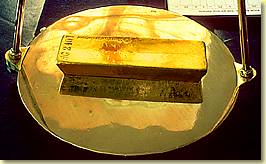
Johannesburg At Dusk


Art In The City Project Johannesburg Metro Buses
“When I got there it was a bit like finding roots, or a heritage, because I knew nothing of Africa. I went there ignorant of everything except the script I was doing. I didn’t know what I would encounter. I didn’t know if I would be living in the bush. Phillip (Noyce) said we’d be living as if on safari, and I got very excited. So I get out there, and Johannesburg looks like New York!” – Derek Luke
Just over 100 years ago, the economic and industrial centre of South Africa today was an endless untouched savannah. This changed very fast when the first gold was found in 1886. The news spread like wildfire and the area experienced an unprecedented gold rush. The government sent two deputies, who founded a little settlement and named it after the first name they both had in common, Johannesburg. Three years later the place was the biggest town in the country. By 1875 almost 100,000 people lived in Johannesburg and the mines employed more than 75,000 workers.
Johannesburg or Jo’burg, as the locals call the city of the gold, is the biggest metropolis in South Africa. With its 3,2 million citizens (sensus in 2001) the city on the Witwatersrand is the predominant commercial centre and the economic motor of the Republic of South Africa.
http://www.southafrica-travel.net/north/a1johb02.htm


Johannesburg is famous for it’s Gold Mines and it’s gold industry is one of the largest in teh world.
CRADLE OF HUMAN KIND
In the northwest of Johannesburg – some 10 km north of Krugersdorp – lies an area of about 50.000 hectares called the “Cradle of Humankind”, proclaimed a World Cultural Heritage Site by the UNESCO. In the centre of the site are a number of dolomitic limestone caves containing extraordinarily many fossillized remains of ancient forms of animals, plants and, most importantly, hominids which had fallen into these caves millions of years ago.
The latest opinion in palaeontology says that the evolution of humans and primates took different directions some 5 to 10 million years ago. The hominids (hominidae) are seen to be the oldest humans on the human branch.


Skull of the Australopithecus Africanus called “Taung Child”, found in 1936 in Sterkfontein and Reconstruction of an Australopithecus Africanus hominid

Entrance to the sterkfontein Cave
The fossil findings in the “Cradle of Humankind” caves have contributed largely to an understanding of the evolution of the human species. In 1936 the fossillized bones of an early human, the “Australopithecus africanus” – were discovered here, in the Sterkfontein Caves. In 1947 the almost complete skull of an adult female Australopithecus Africanus was found. Initially named Plesianthropus transvaalensis (“near-man” of the Transvaal), which inspired the nickname ‘Mrs.Ples’. It is estimated to be between 2.6 and 2.8 million years old, ranking high on the long list of australopithecine discoveries which made Sterkfontein world-famous.
In total, some 850 fossillized remains of hominids were discovered in the caves around Sterkfontein – Swartkrans, Plover’s Lake, Bolt’s Farm, Coopers, Gladysvale, Kromdraai, Drimolen, Haasgat, Gondolin and Wonder Cave, and also many stone and bone tools and indications for the use of fire.
Of all the caves in the “Cradle of Humankind” at present only the Sterkfontein Caves and the Wonder Cave are open for visitors. Further information to be found on www.maropeng.co.za








